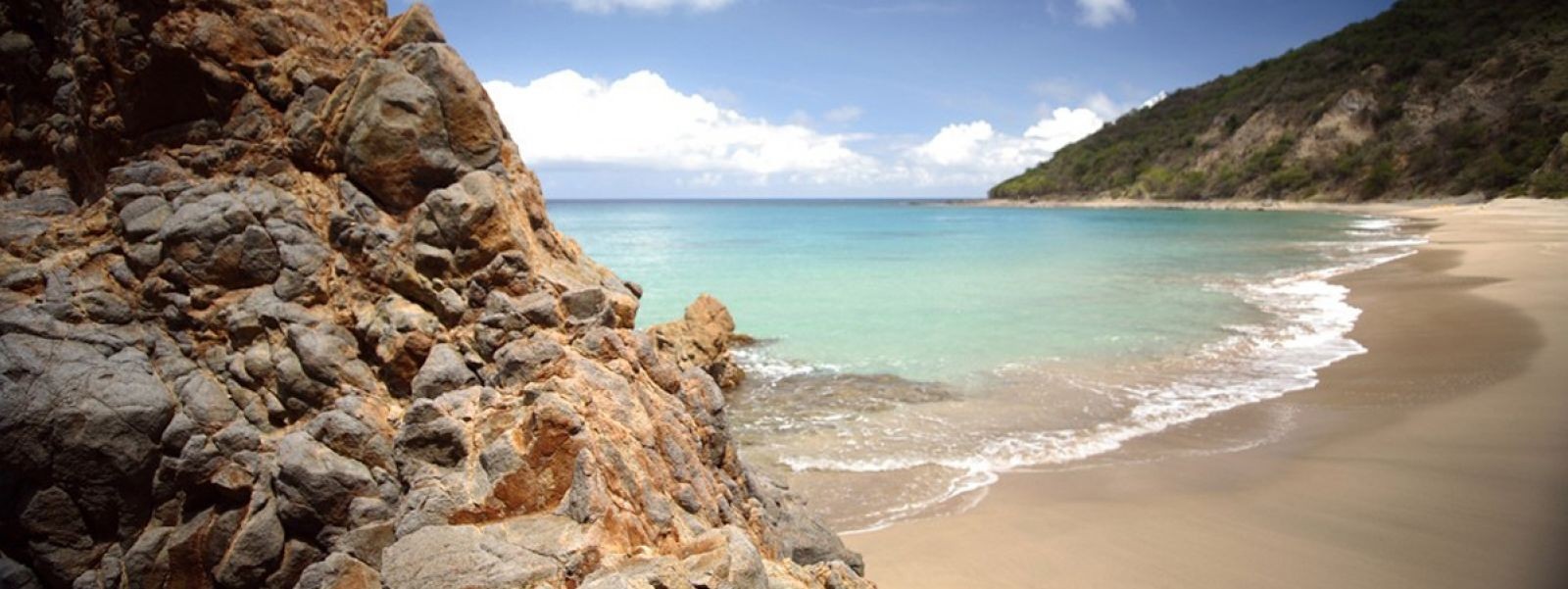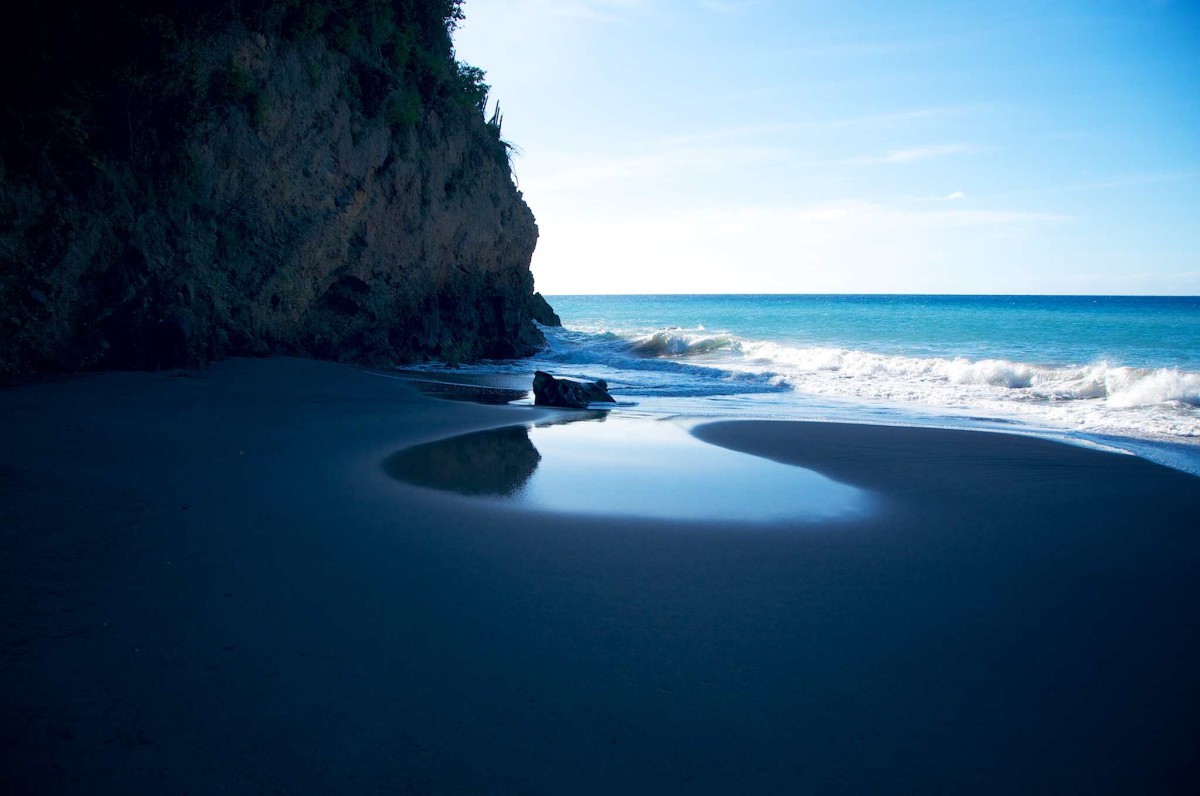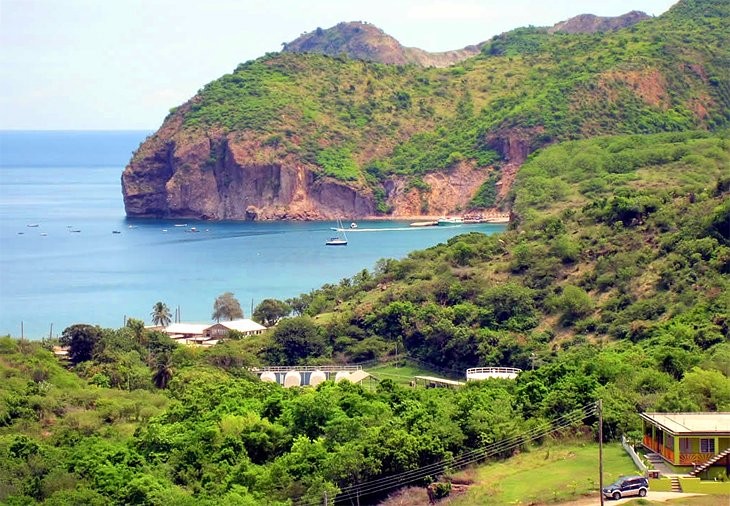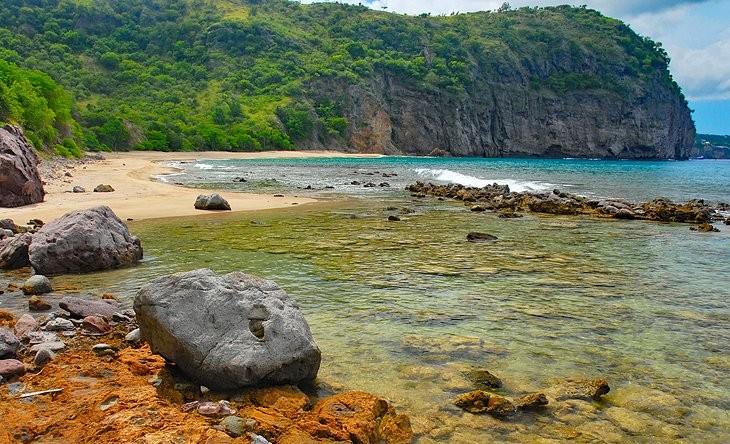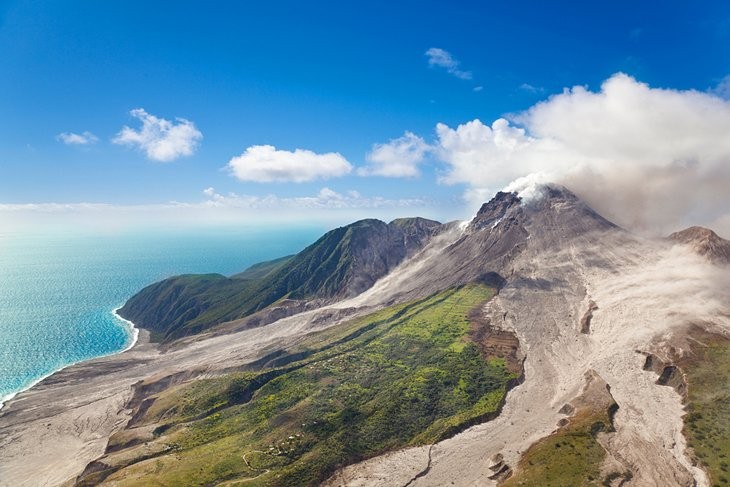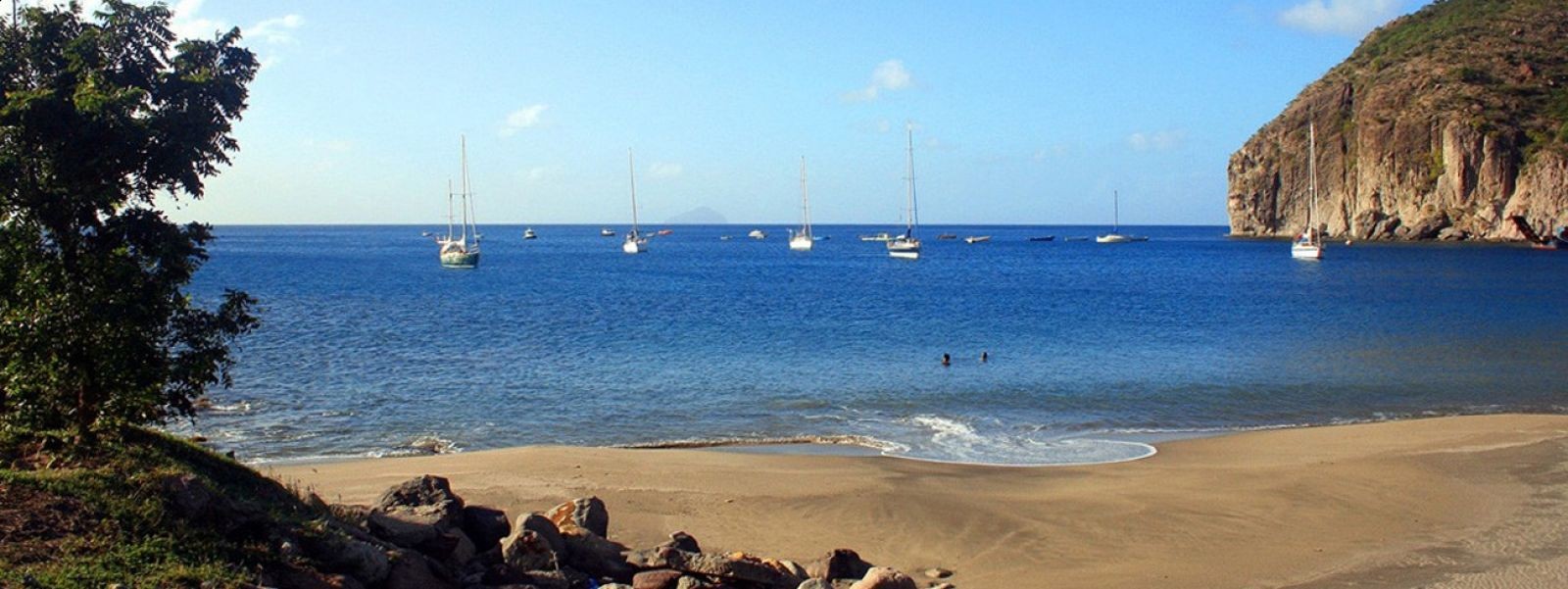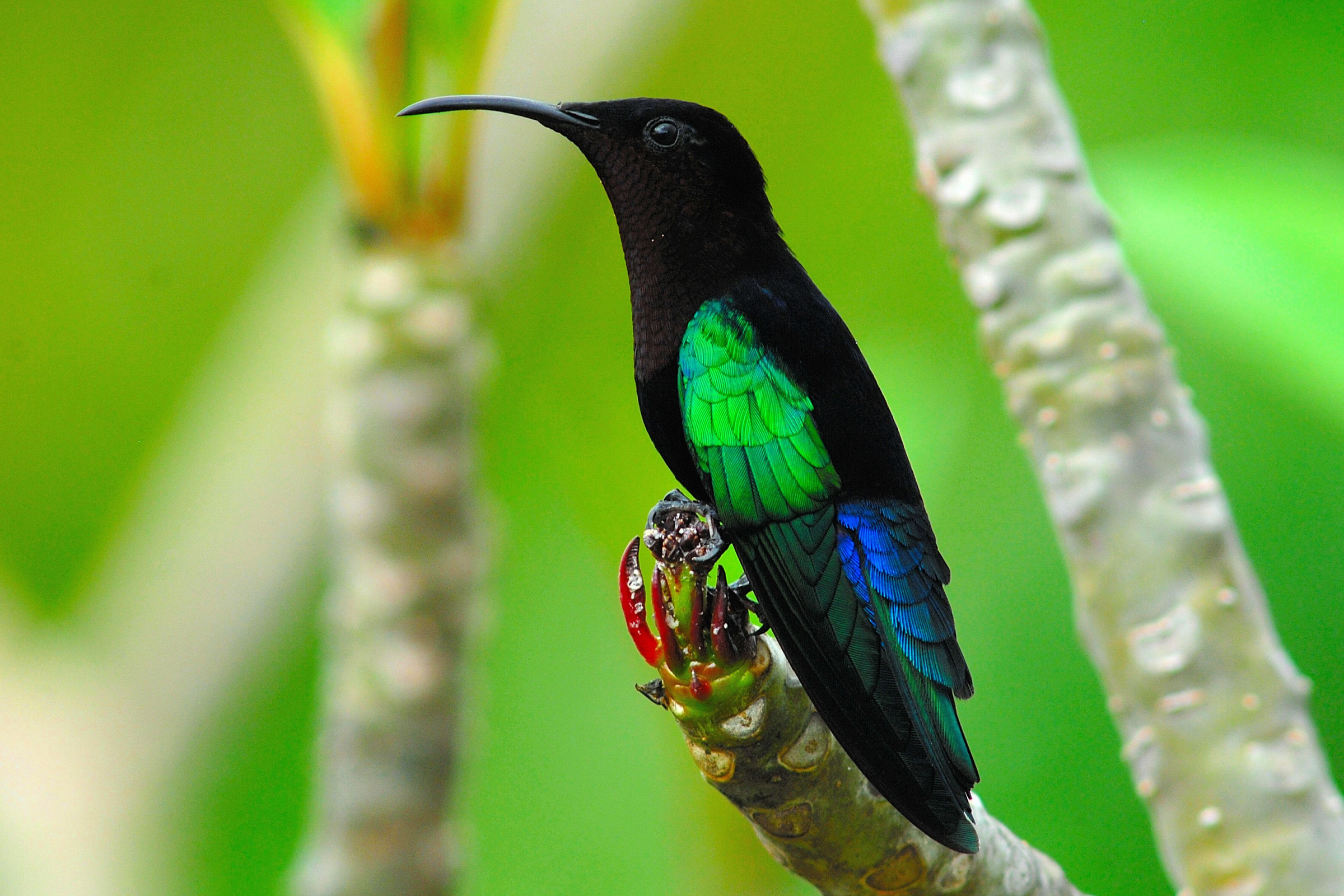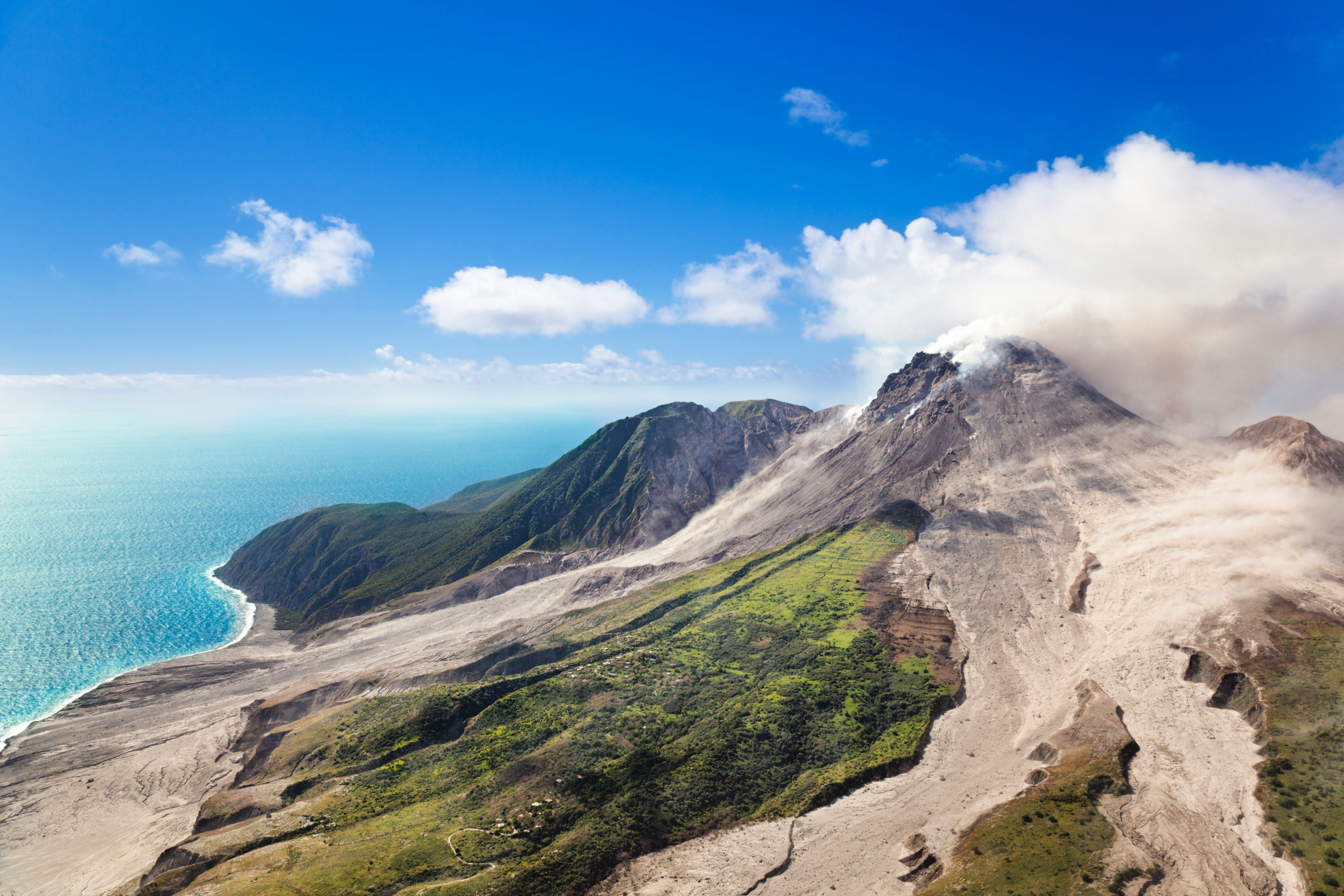Located in the Leeward Islands in the West Indies, Montserrat is a popular tourist destination primarily for its superb natural landscape and the unique morphology that has been shaped after the catastrophic volcanic eruption of the Soufriere Hills Volcano in 1997 that reshaped the island almost in its entirety, making its shores adorned by black sand and nearly 75% of its inhabitable land turned into the now referred to as the Exclusions Zone, which is home to more than 50 towns and villages buried under tons of lava and volcanic ash, including the former Montserrat capital, Plymouth.
Although not as famous as other of its Caribbean siblings, Montserrat is a beloved vacation option, especially for those seeking unique, off-the-beaten-path experiences. With strong influences from the Irish culture brought to the island around the 1600s, the island is a world on its own for managing to blend volcanic landscapes and lush vegetation with impressive ghauts, volcanic shores, amazing vantage points, unique flora and fauna, rare animal species and indigenous animals, and a wide array of things to do, see, and visit, whether you are a nature, culture, or history enthusiast.
Interesting Facts About Montserrat
- Most people call the local population the Montserratians. However, the locals prefer to call themselves the “Stratians”.
- St. Patrick’s Day is a national holiday in Montserrat (the only state outside Ireland that has declared this day a national holiday) and is celebrated with a 7-day feast.
- You may hear Montserrat being referred to as the Emerald Isle of the Caribbean. This is because its landscape is pretty similar to the Irish terrain. In addition, Montserrat has a rich Irish cultural heritage.
- Montserrat is the only Caribbean island serving Guinness at any pub throughout the island.
- The Tainos people were the first ones to settle the island in around 500 B.C. At the time, the island was called Alliouagana, which translates as the “Land of the Prickly Bush”, mainly because of the many bougainvillea and other thorny plants that dotted the island’s landscape.
- Although there used to be many Tainos settlements around the island, none of them exist to date. You can learn about them, though, at the Montserrat National Museum.
- To leave the island, visitors will need to pay two different taxes – a EC$45 (per person) Montserrat Departure tax and a EC$70 (per person) Antigua Arrival tax. Tax rates are subject to change, though, so please speak with your travel agent before planning your visit.
- There are not many banks and ATMs on the island, so it is best to carry cash with you.
- Most credit cards are not accepted by local businesses. Traveller’s cheques have a better acceptance, though.
- Tipping is not obligatory as most restaurant bills include a 10% tax.
Climate and Weather in Montserrat
The island has quite high average temperatures throughout the year, ranging from 23oC (73.4oF) to 27oC (81oF). However, the summer months are the hottest (temperatures can be as high as 32oC or 89.6oF), which can be rather unpleasant, especially if the trade winds don’t blow to cool the atmosphere.
Overall, Montserrat has lots of daylight and sunshine throughout the year, while the UV Index ranges from 8 to 12. Although both are considered serious, the greatest risk of sunburn from unprotected sun exposure (which can happen in a few minutes without wearing SPF-50+) is between March and September, when the UV Index is 12.
That aside, Montserrat has both a wet and dry season, with the first being from July to November and the second lasting from December through June. As for the hurricane season, it peaks between early August to late-October, although it officially starts in July and ends in November.
The Exclusion Zone
When the island was shaken by the eruption of the once-dormant Soufriere Hills Volcano, in 1997, it changed forever. The majority of the inhabitants were forced to evacuate their towns and even leave the island and move to North America and the UK. This dropped the island’s population from about 14,000 to something over 1,000. However, with the current development on the island, the population is expected to rise again shortly.
The volcanic eruption affected 2/3 of the island, leaving it with nothing but multiple layers of volcanic ash and mud that Mother Nature somehow enveloped with profoundly lush vegetation and verdant lands. This area is called Zone V, which means that it is strictly forbidden to enter this particular area. The only way to access this off-limits region is with an authorised guide and a permit. Anyone caught to be inside Zone V will face prosecution, so the applicable regulations are not to be taken lightly. Besides Zone V, though, there are two more zones in Montserrat:
- Zones A and B – They include inhabited areas and are open 24 hours.
- Zones C&F – These are not inhabited areas but are open to the public to visit only during daylight hours.
Although most of the island lies within the Exclusion Zone, there is still plenty to see, do, and experience in Montserrat, including swimming, snorkelling, diving, kayaking, exploring the Volcano, trekking, hiking, mountain climbing, cliff jumping, cave exploring, wildlife spotting, bird-watching, history tracking, and so many more.
One of the most popular activities, though, the majority of tourists include in their travel itinerary is a visit to the place where the famous AIR Studios (founded by Beatles record producer, Sir George Martin) used to greet some of the elite of the rock and roll and pop music scene of the 1980s!
Getting to Montserrat
Although a few years back travellers could reach the island by both plane and ferry, the only option remaining today is via plane. Hopefully, the ferry service starts operating again, connecting Montserrat with other Caribbean destinations as in the past.
Nevertheless, it should be noted that the flights to Montserrat can only take off from the Antigua airport if the weather conditions are good because the island’s infrastructure is not yet as advanced as that of Antigua or other Caribbean islands (the airport runway is too short for planes to land with bad weather).
Located in the Leeward Islands in the West Indies, Montserrat is a popular tourist destination primarily for its superb natural landscape and the unique morphology that has been shaped after the catastrophic volcanic eruption of the Soufriere Hills Volcano in 1997 that reshaped the island almost in its entirety, making its shores adorned by black sand and nearly 75% of its inhabitable land turned into the now referred to as the Exclusions Zone, which is home to more than 50 towns and villages buried under tons of lava and volcanic ash, including the former Montserrat capital, Plymouth.
Although not as famous as other of its Caribbean siblings, Montserrat is a beloved vacation option, especially for those seeking unique, off-the-beaten-path experiences. With strong influences from the Irish culture brought to the island around the 1600s, the island is a world on its own for managing to blend volcanic landscapes and lush vegetation with impressive ghauts, volcanic shores, amazing vantage points, unique flora and fauna, rare animal species and indigenous animals, and a wide array of things to do, see, and visit, whether you are a nature, culture, or history enthusiast.
Interesting Facts About Montserrat
- Most people call the local population the Montserratians. However, the locals prefer to call themselves the “Stratians”.
- St. Patrick’s Day is a national holiday in Montserrat (the only state outside Ireland that has declared this day a national holiday) and is celebrated with a 7-day feast.
- You may hear Montserrat being referred to as the Emerald Isle of the Caribbean. This is because its landscape is pretty similar to the Irish terrain. In addition, Montserrat has a rich Irish cultural heritage.
- Montserrat is the only Caribbean island serving Guinness at any pub throughout the island.
- The Tainos people were the first ones to settle the island in around 500 B.C. At the time, the island was called Alliouagana, which translates as the “Land of the Prickly Bush”, mainly because of the many bougainvillea and other thorny plants that dotted the island’s landscape.
- Although there used to be many Tainos settlements around the island, none of them exist to date. You can learn about them, though, at the Montserrat National Museum.
- To leave the island, visitors will need to pay two different taxes – a EC$45 (per person) Montserrat Departure tax and a EC$70 (per person) Antigua Arrival tax. Tax rates are subject to change, though, so please speak with your travel agent before planning your visit.
- There are not many banks and ATMs on the island, so it is best to carry cash with you.
- Most credit cards are not accepted by local businesses. Traveller’s cheques have a better acceptance, though.
- Tipping is not obligatory as most restaurant bills include a 10% tax.
Climate and Weather in Montserrat
The island has quite high average temperatures throughout the year, ranging from 23oC (73.4oF) to 27oC (81oF). However, the summer months are the hottest (temperatures can be as high as 32oC or 89.6oF), which can be rather unpleasant, especially if the trade winds don’t blow to cool the atmosphere.
Overall, Montserrat has lots of daylight and sunshine throughout the year, while the UV Index ranges from 8 to 12. Although both are considered serious, the greatest risk of sunburn from unprotected sun exposure (which can happen in a few minutes without wearing SPF-50+) is between March and September, when the UV Index is 12.
That aside, Montserrat has both a wet and dry season, with the first being from July to November and the second lasting from December through June. As for the hurricane season, it peaks between early August to late-October, although it officially starts in July and ends in November.
The Exclusion Zone
When the island was shaken by the eruption of the once-dormant Soufriere Hills Volcano, in 1997, it changed forever. The majority of the inhabitants were forced to evacuate their towns and even leave the island and move to North America and the UK. This dropped the island’s population from about 14,000 to something over 1,000. However, with the current development on the island, the population is expected to rise again shortly.
The volcanic eruption affected 2/3 of the island, leaving it with nothing but multiple layers of volcanic ash and mud that Mother Nature somehow enveloped with profoundly lush vegetation and verdant lands. This area is called Zone V, which means that it is strictly forbidden to enter this particular area. The only way to access this off-limits region is with an authorised guide and a permit. Anyone caught to be inside Zone V will face prosecution, so the applicable regulations are not to be taken lightly. Besides Zone V, though, there are two more zones in Montserrat:
- Zones A and B – They include inhabited areas and are open 24 hours.
- Zones C&F – These are not inhabited areas but are open to the public to visit only during daylight hours.
Although most of the island lies within the Exclusion Zone, there is still plenty to see, do, and experience in Montserrat, including swimming, snorkelling, diving, kayaking, exploring the Volcano, trekking, hiking, mountain climbing, cliff jumping, cave exploring, wildlife spotting, bird-watching, history tracking, and so many more.
One of the most popular activities, though, the majority of tourists include in their travel itinerary is a visit to the place where the famous AIR Studios (founded by Beatles record producer, Sir George Martin) used to greet some of the elite of the rock and roll and pop music scene of the 1980s!
Getting to Montserrat
Although a few years back travellers could reach the island by both plane and ferry, the only option remaining today is via plane. Hopefully, the ferry service starts operating again, connecting Montserrat with other Caribbean destinations as in the past.
Nevertheless, it should be noted that the flights to Montserrat can only take off from the Antigua airport if the weather conditions are good because the island’s infrastructure is not yet as advanced as that of Antigua or other Caribbean islands (the airport runway is too short for planes to land with bad weather).




